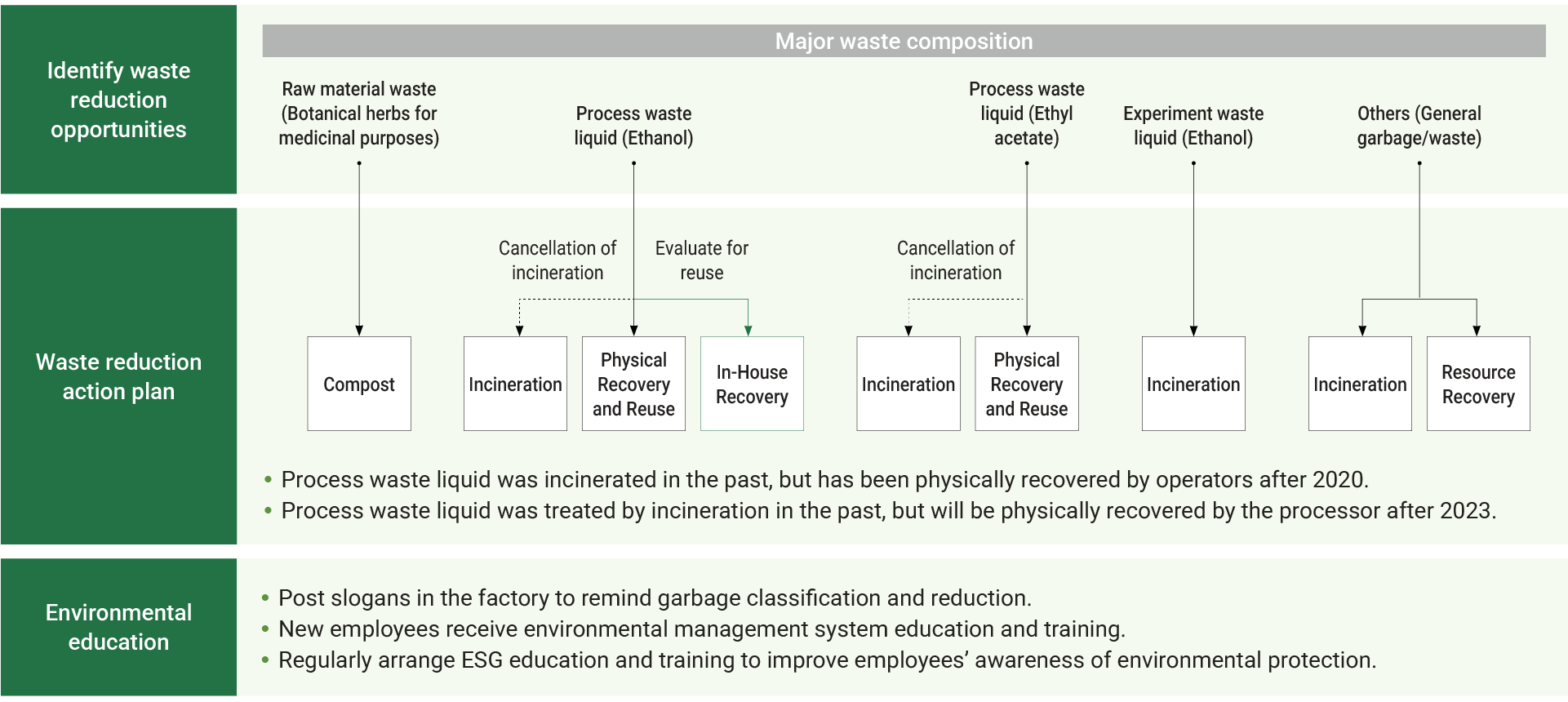Oneness Biotech is committed to creating a sustainable environment for the next generation, and we support the concept of a circular economy as we maximize the efficiency of resource usage through chemical substance management, waste reduction and recycling. In addition to monitoring various environmental indicators at the factory to ensure compliance with all environmental regulations, the dedicated Environmental Health and Safety team continuously promotes improvement plans. This effort aims to minimize environmental impact and move towards the goal of “Zero Pollution”.
The main ingredient in the product is natural herbs; no harmful substances are added. Or substances listed as Substances of Very High Concern (SVHC) or restricted substances under the EU Product Composition REACH regulation, ingredient details can be referenced in the product specification sheet.
None of the substance of very high concern (SVHC) or REACH restricted substances are used in the production process.
Waste Management Targets


Note:
※The above content is taken from the ESG Report